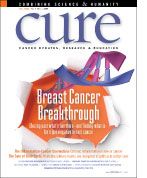Publication
Article
CURE
Effective Strategy Found to Prevent Rash
Author(s):
Study shows how to prevent rash caused by certain cancer drugs.
Using a skin treatment regimen can prevent rash and other skin toxicities in patients receiving epidermal growth factor receptor (EGFR) inhibitors, found a study presented at the American Society of Clinical Oncology annual meeting in June.
Skin toxicities can develop in up to 90 percent of patients taking EGFR inhibitors, which include Erbitux (cetuximab) for colorectal and head and neck cancers, Vectibix (panitumumab) for colorectal cancer, and Tarceva (erlotinib) for lung and pancreatic cancers. In some cases, rash can lead to infection and delays in treatment.
When given before Vectibix, a combination of sunscreen, moisturizers, topical corticosteroids, and the oral antibiotic doxycycline reduced the incidence of severe rash (grade 2 or higher) by more than half during a six-week period, compared with patients who were treated once a rash developed.
While some studies have shown that patients who develop a rash may be more likely to benefit from treatment, Edith Mitchell, MD, lead investigator of the rash prevention study, emphasizes that “the rash does not equal response,” and preventing rash is generally not felt to affect treatment response.
“For panitumumab, 90 percent of patients get the rash and only 10 percent of patients develop a response,” says Mitchell, of Thomas Jefferson University in Philadelphia.
The study also showed the preventive treatment reduced the number of dose delays, improved patient quality of life, and decreased nausea, vomiting, fatigue, diarrhea, dehydration, and neutropenia.
The skin management regimen may also offer some benefit to patients who are already on an EGFR inhibitor, Mitchell says. “The bottom line is that patients don’t have to suffer with the skin toxicity. It can be effectively [prevented or] managed [while retaining] anti-tumor effectiveness.”






